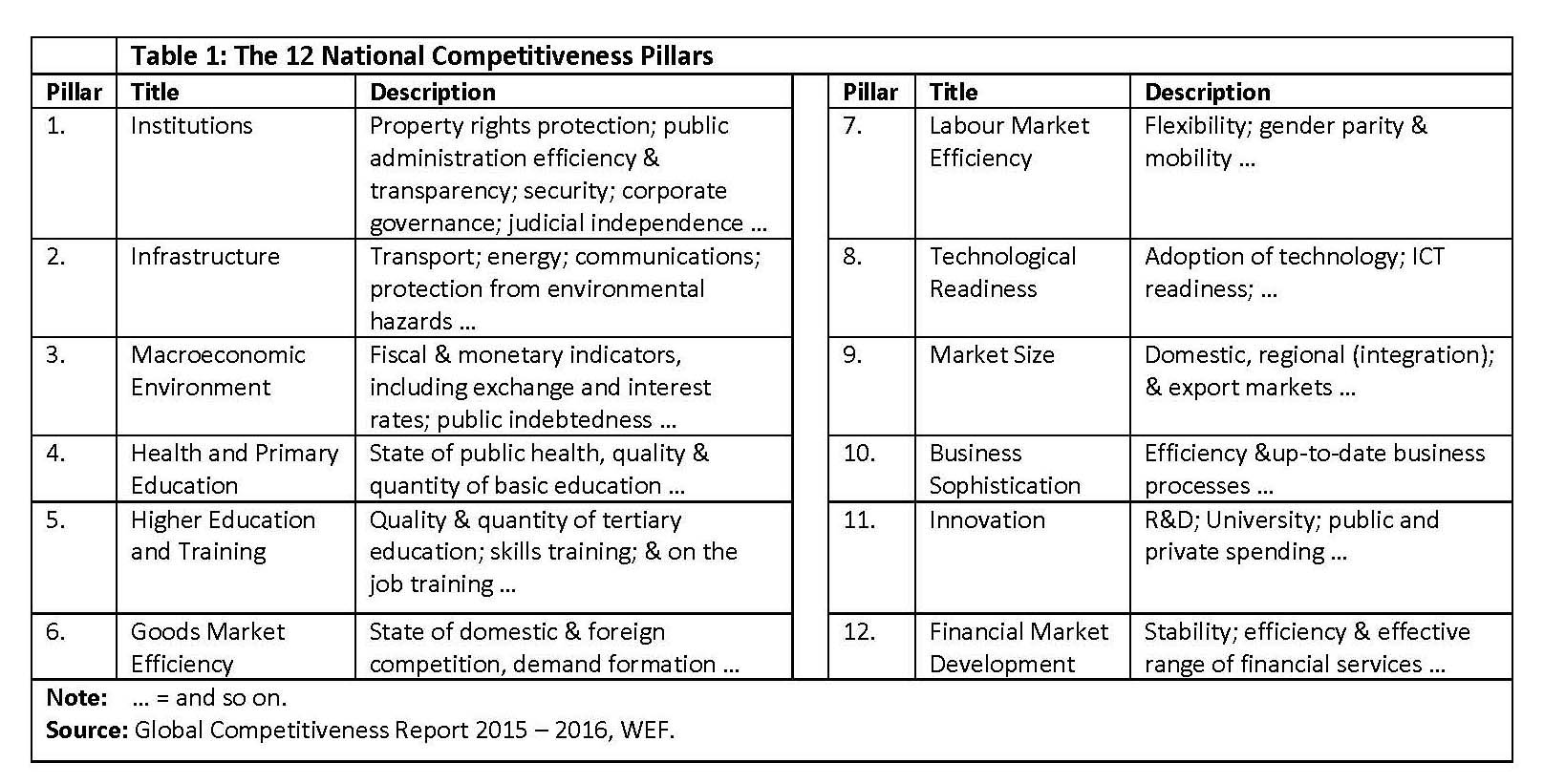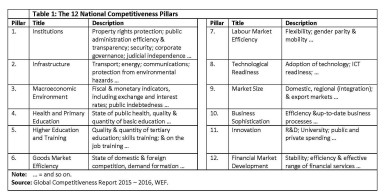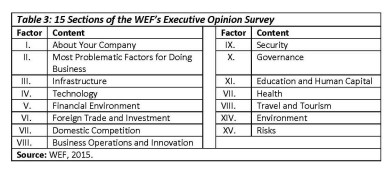Introduction
Last week I offered the view that for the foreseeable future, the GDP will continue as the premier measure worldwide, and in Guyana, of economic size and progress, as well as national and individual welfare/well-being. Several alternatives to the GDP have recently gained prominence. These, however, should be treated as complementary/supplementary. Two are of special relevance to Guyana, namely, the Human Development Index (HDI) and the Global Competitiveness Index (GCI). Both these indexes are produced annually for Guyana. And, since on several previous occasions, I have discussed the HDI, I will not repeat here; my focus will be on the GCI.
What is national competitiveness?

These components are then grouped into 12 pillars, namely, institutions; infrastructure; macroeconomic environment; health and primary education; higher education and training; goods market efficiencies; labour market efficiency; financial market development; technological readiness; market size; business sophistication; and, innovation. (See Table 1)
Within this twelve-pillar framework the GCI is constructed.
These 12 pillars are computed from 114 indicators, which are organized around three “stages of development” (or sub-indexes) that the WEF uses to categorize national competitiveness, for comparative purposes.
Three stages of development
The three stages of development are 1) economies, whose development rely on basic requirements. These requirements are the absolute (or extensive) growth in supply of basic productive factors: labour, land, capital, enterprise. 2) Economies whose growth is driven by efficiency of the productive factors; and 3) economies whose growth is driven by technological innovation and increased “business sophistication” (Table 2). The economic proxies from which these stages are derived are GDP per capita and the proportion of raw materials in country exports.
Obviously, all the pillars matter for all economies. However, they would affect economies differently, based on their stage of development. Thus Guyana’s competitiveness would be greatly enhanced by good governance of its large natural resources sector, but this may not hold true for Canada, which also has a large natural resources sector, but better regulated.
Factor-driven economies (the first stage), compete based on factor endowments such as natural resources, unskilled labour and low wages. These are disproportionally impacted by Pillars 1-4. An innovation-driven economy (third-stage), like Germany, would be disproportionally affected by Pillars 11-12. As we shall observe next week, Guyana (second stage) is efficiency-driven by Pillars 5-10.
The GCI first appeared in 2005 and has been regularly updated, with the last update in 2007. The 2015-2016 GCI is prepared for 140 countries that account for 98.3 per cent of global GDP. The GCI is computed from two basic sets of information. Firstly, there is the GDP, along with other economic/financial data routinely generated by international organizations (UN agencies/ IMF/World Bank); regional institutions (development banks/trade organizations); and, national organizations. Secondly, (and through its own efforts) the results of a Global Executive Opinion Survey (EOS), which the WEF administers annually.
The voice of business
The EOS seeks to measure “the voice of the business community”, for a broad swathe of domains; for example, its perception of national corruption, the skills gap, policy credence, security of property, and human rights. The Survey is divided into 15 Sections, as indicated in Table 3.
Next week I will continue focusing on Guyana’s performance.








